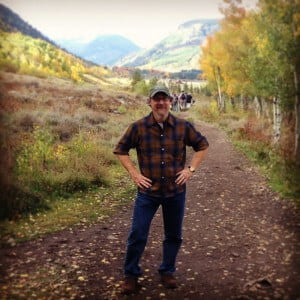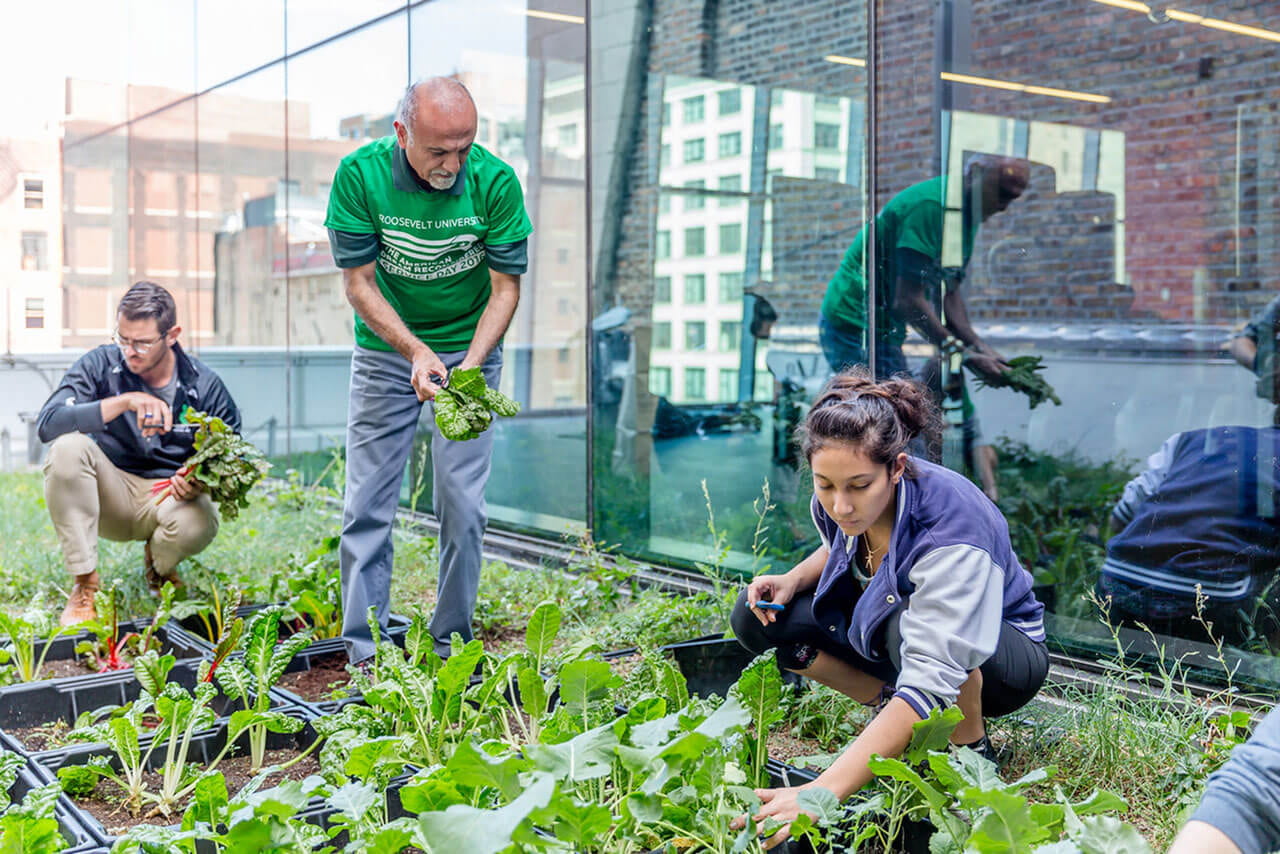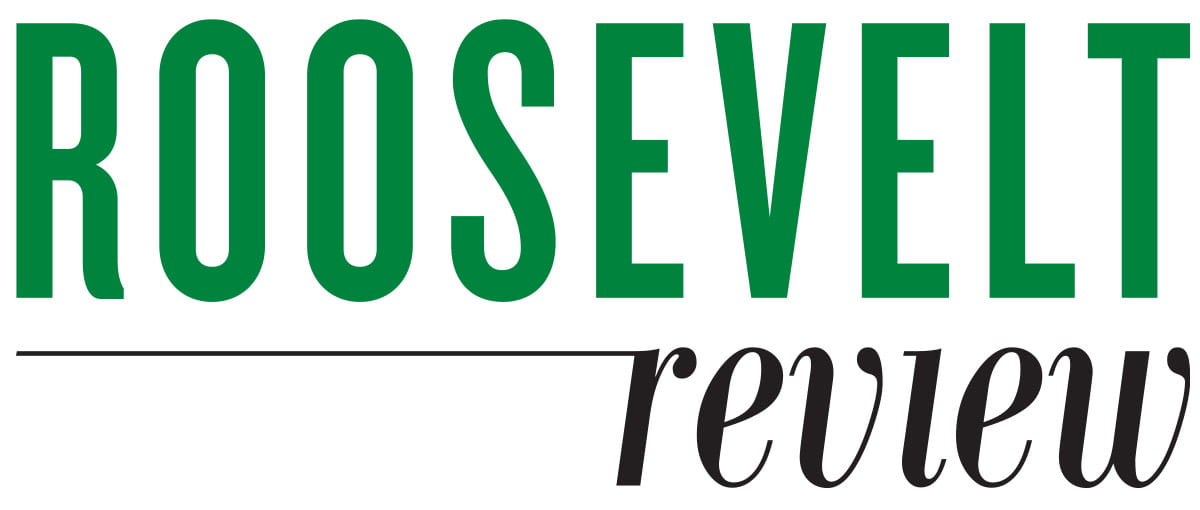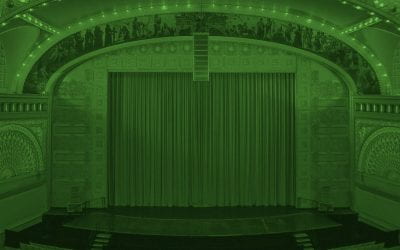Building as teacher
By Carla Beecher

Professor Michael Bryson, PhD on a hike through an aspen forest outside of Crested Butte CO
Professor Michael Bryson, PhD, has sweeping views about sustainability from his 27 years at Roosevelt.
The director of sustainability studies in the College of Arts and Sciences and chair of the Department of Sociology and Sustainability began his tenure in the humanities in 1996 and then answered the call with a colleague in 2009 to create an interdisciplinary, general education seminar for adult learners titled “The Sustainable City,” which focused on the urban environment. That foray led to the creation of Roosevelt’s Bachelor of Arts in Sustainability Studies in 2010, which today can be combined with a Master of Public Administration degree.
“At the heart of Roosevelt’s mission is social justice, which directly relates to fostering ethics and equity through sustainability. The Wabash Building is a manifestation of that commitment,”
— Bryson said from his office at the downtown Chicago campus.
As a teacher, he invites students to get out of their chairs and take in the floor-to-ceiling view out the windows that flood the classroom with natural light. There, they see the lake, Grant and Millennium parks, the traffic below and myriad structures all around.
“It’s a bird’s-eye view that’s actually pretty powerful. We talk about urban design, natural resources, transportation infrastructure and how Chicago is a city of neighborhoods that has been transformed by urbanization over the last 200 years,” he said.

The building’s green roof gives students and faculty a chance to get their hands dirty in the soil, nurturing pollinator plants or tending to its food garden.
The class uses the Wabash Building as a way to learn how thoughtful architecture can minimize human waste and its effect on the environment. They study how campuswide recycling decreases landfill waste and how composting organic materials diverts them completely from the dump. The building’s green roof gives students a chance to get their hands dirty in the soil, nurturing pollinator plants or tending to its food garden.
They also learn that some hidden aspects of the building are actually some of the most effective in reducing waste, especially those used to reduce energy consumption for lighting, heating and cooling. When the LEED Gold-certified green building was completed in 2012, two percent of its $123 million cost went toward conserving energy — a sum which already has been recouped.
“It’s a living lab for our students that faculty use as teaching tool,” …“It doesn’t stop with the building, though. We focus on educating the people who work and learn here every day so that they can take Roosevelt’s lessons in sustainability home with them to their communities. The building inspires and enables sustainable practices that spread our social-justice values beyond our walls and into society.”
— Bryson said from his office at the downtown Chicago campus.
More in this section
Auditorium Theatre
The Auditorium Theatre’s 2019–20 season commemorates its 130th anniversary with exciting premieres, the return of favorite performers and more.
College of Education
Student, faculty and staff accomplishments in the College of Education.
College of Arts and Sciences
Student, faculty and staff accomplishments in the College of Arts and Sciences.



